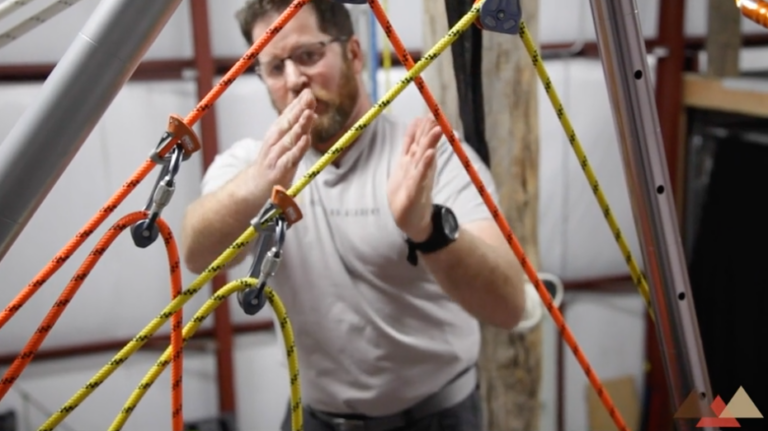High Directional Setups and Resultants
High directional setups and resultants are integral to complex rigging and rescue operations, providing the stability and control needed to manage challenging loads. At the core of these systems lies the concept of the resultant vector, a fundamental principle that dictates how forces interact within the system. Understanding this principle is key to ensuring both stability and safety in high directional operations.
Foundational Concepts in High Directional Setups
Resultant Vector
The resultant vector represents the combined force acting within a system, including its magnitude and direction. In high directional setups, the primary goal is to manage this vector so it remains within the system’s footprint—typically defined by the base of the frame or pod. When the resultant falls outside this footprint, the system becomes unstable, risking failure.
High Directionals
High directionals, such as monopods, gin poles, or tripods, are specialized setups used to alter the direction and distribution of forces. These systems are common in rescue operations, particularly during edge transitions or situations requiring precise load management.
Stability Through Head Pulleys
In high directional systems, stability is heavily influenced by the direction of the force passing through the head pulleys. Rather than focusing solely on the force’s magnitude, understanding its direction is critical to keeping the resultant within the system’s footprint.
Guiding Systems
To maintain stability, guiding systems like the Petzl Jag, Voodoo Hitch, or Transport Hitch are employed. These systems provide opposing tension to counteract deviations caused by external factors, ensuring the resultant remains aligned with the system’s design.
Key Insights for Managing Stability
- Force Direction Over Magnitude:
The equality of forces on either side of a pulley makes the direction of those forces paramount. Proper alignment ensures that the resultant vector remains within the system’s base, maintaining stability. - Adaptation to Movement:
Even small deviations, such as an attendant shifting lines during an edge transition, can affect force direction. These changes must be managed in real time to prevent instability. - Role of Guiding Systems:
Guiding systems act as a stabilizing force, applying opposing tension around the high directional frame. This tension prevents the resultant from drifting outside the defined space, especially in dynamic environments.
Summary of Key Concepts
High directional setups require precise force management to ensure safety and stability. The resultant vector is the cornerstone of this process, dictating the system’s structural integrity. By understanding the principles of force direction and employing guiding systems to counteract deviations, rigging professionals can maintain the necessary balance for successful operations.
This foundational understanding sets the stage for more advanced discussions on high directional systems, including practical configurations and troubleshooting strategies, explored further in.
Peace on your days,
Lance










